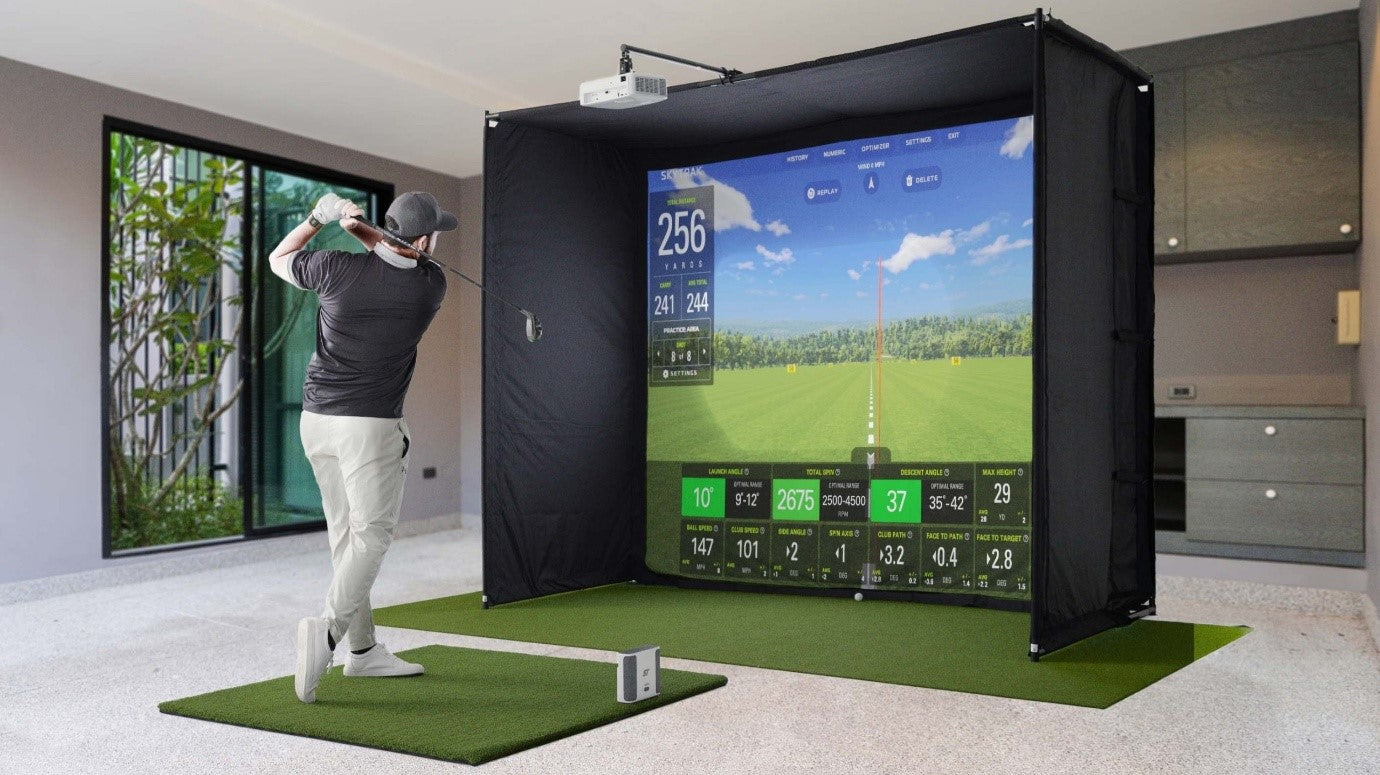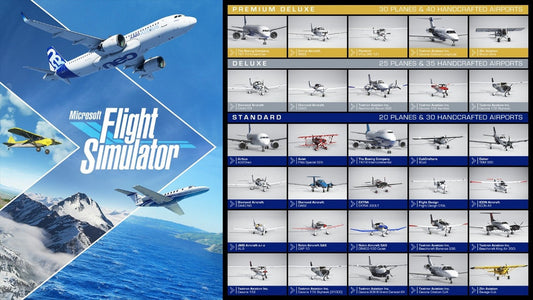How Simulators are Changing the Gaming Industry

I think we can all agree that as kids, we all fantasised about jumping into our favourite game worlds and imagined living our dream lives there, right?
Well, it wasn’t “realistically” possible at that time, as video games limited us to monitor screens. However, fast forward to today, we see that dedicated video game simulators have shown up that allow us to “virtually” jump into our favourite game worlds.
What wasn’t possible before has now become a reality, though the technology behind this is still in its early stages. But… we cannot deny the fact that the gaming industry is rapidly changing under the influence of gaming simulators. As I frequently put it, gaming simulators are the next BIG THING in gaming.
In a few years from now, the gaming world as we see it will be completely changed. How? That’s what I’m going to show you in this article – how simulators are changing the gaming industry!
How Gaming Has Changed till Now
To give you a better idea of how simulators are changing the gaming industry, let me take you through a quick little historical background on how the way we game has changed till now. This will better equip you with an understanding of what the future will look like once the impact of simulators on the gaming industry becomes widespread and more common.

Back in the early days, video games were quite simple. Most of them were in 2D and had black and white visuals. Games like Pong (1972) and the original Tennis for Two (1958) didn’t have much going on graphically, but... they were revolutionary for their time. They introduced us to the idea that we could “actually” play on a screen.

Soon after, colour started showing up in games. With titles like Pac-Man and Super Mario Bros, things became more lively. This added a whole new level of fun. However, even with the boost in visuals, we were still stuck playing on flat monitor screens. The experience was entertaining, but felt a bit limited.

Then came the game-changing revolutionary technology: 3D graphics. This completely redefined how we saw video games. Titles like Doom, Quake, and later on, GTA III took immersion to the next level. Suddenly, you weren’t just looking at the game, you were inside it. Gaming became more detailed, more realistic, and way more fun. And quite frankly, this was the time around when I started fantasising about living in games like Grand Theft Auto: San Andreas or helping Max Payne in his adventures.

As time passed, simulation games began to show up around the 2000s. These were games that tried to copy real-life experiences. Titles like The Sims let us step into roles and live alternate lives, but we still played them on screens. Around the same time, hardware simulators started showing up too, but mostly for racing and flight games. Think of a Gran Turismo setup with steering wheels equipped or Microsoft Flight Simulator with a full cockpit setup. Cool stuff, but they were mostly niche and only supported a few types of games that didn’t appeal to the majority of gamers.

However, everything changed when Virtual Reality (VR) came into play in the 2010s. Games like Beat Saber, Half-Life: Alyx, and VR support for Assetto Corsa showed us what it really meant to “step into” a game. And that’s where the impact of simulators on the gaming industry began to truly become noticeable, and things started getting exciting.
How Simulators Are Now Changing the Way We Game
The main goal of any simulator is simple—to immerse the player as deeply as possible. And that immersion is becoming more real than ever before.
As seen above, we’ve come a long way from sitting in front of screens and pressing buttons. Today, simulators are changing the gaming industry by literally putting players inside the game.

One key reason is the rise of smarter AI. In most games, non-playable characters (NPCs) usually follow scripted patterns. But not anymore. Thanks to increasingly advanced AI, NPCs can now respond to players in real-time, adapt to their behaviour, and even “think” on their own. This makes in-game situations feel alive, unscripted, and unpredictable, something no traditional game could ever achieve before. This alone is a massive reason behind how simulators are changing the gaming industry today.

Moreover, simulators are also no longer limited to just flight or racing. These categories are still popular, yes, but now we also have full-scale simulators for tennis (like the ACE Arena Tennis Simulator), golf (such as the TrackMan and Full Swing simulators), skiing (like SkyTechSport), skating, and even farming (Farming Simulator series with hardware tractor controllers!). Categories are growing fast, and more types of simulators are appearing across the board.
What’s more is that some of these simulators can be installed in home setups, especially racing and flight rigs. But many full-body simulators, like tennis or golf cages, are often found in arcades, gyms, or dedicated simulator centres.

And let’s not forget the role of VR. While simulators without VR still exist and work well, adding VR to the mix completely changes the experience. When you wear a VR headset while driving a car, playing tennis, or flying a plane, you literally forget you're standing in your room. It feels that much real!
Interestingly, the 2020 COVID pandemic gave simulators a huge push. With real sports cancelled, professional athletes and fans turned to simulators. For example, Formula 1 racers used racing sims to compete online, and tennis players practised on simulators. This massively boosted their popularity and demand.

Another reason simulators are becoming popular is because of their real-life practicality. Even though modern video games like Call of Duty improve reflexes and hand-eye coordination, simulators go beyond that. In that, you have to stay aware in full 3D space, use your body, and make quick decisions, just like in real life.
For example, using a racing sim can actually help someone learn the basics of real-world driving. The same goes for flight sims, many pilots and aspiring aviators practice with Microsoft Flight Simulator to sharpen their skills. Even farmers use farming simulators to train on new machinery, and builders practice with construction sims before touching real tools.
All these simulation software are marketed as video games, and as the impact of simulators on the gaming industry grows, we’ll continue to see more and more diverse simulation games roll out. From FPS and RPG to Action-Adventure simulations, the future of the gaming industry looks bright!
And that’s how simulators are changing the gaming industry. But why, one may ask.
Why Simulators Will Become the Future of Gaming?

So, what exactly is pushing simulators to the frontlines of gaming’s future? Well, for starters, cloud gaming. As modern games aim for hyper-realism, they demand more powerful hardware. Not everyone can afford a high-end gaming rig. That’s where cloud gaming shines. With services like NVIDIA GeForce NOW or Xbox Cloud Gaming, even a low-end “potato” PC can run the most demanding simulation games smoothly and beautifully, as long as you’ve got a stable internet connection.
And that brings us to connectivity. Internet access is becoming faster and more global than ever. Thanks to projects like Elon Musk’s Starlink, even people living in remote areas, like mountain villages or African forests, can now enjoy high-speed internet. This means more people can access and enjoy simulation games without worrying about location.

Then there’s VR gaming, which is still fairly new but growing fast. Developers are still discovering what’s possible with VR, but when you combine it with simulators, tons of possibilities form. One such possibility could be standing on a football field, playing as a goalkeeper in VR, or walking through a construction site using a building simulator with hand tracking and motion sensors. We may even see ultra-realistic firefighter simulators where players not only see flames but also "feel" the heat through haptic feedback suits. Or maybe even deep-sea diving simulators where players explore virtual ocean floors, all from their living room. The possibilities are endless.
And finally, the interest in simulation itself is booming. Even though sports simulators have been around for a while, they never really took the spotlight. That changed in 2020 when COVID struck. With sports events cancelled due to the pandemic, fans flocked to simulators. Wolverine Studios reported a doubling or even tripling in interest compared to pre-COVID times. Twitch, too, exploded as its daily viewership surged by 83% between January and April 2020, reaching 2.3 million concurrent viewers daily.
All of this shows exactly how simulators are changing the gaming industry, and more importantly, why they’re going to be a huge part of its future.





